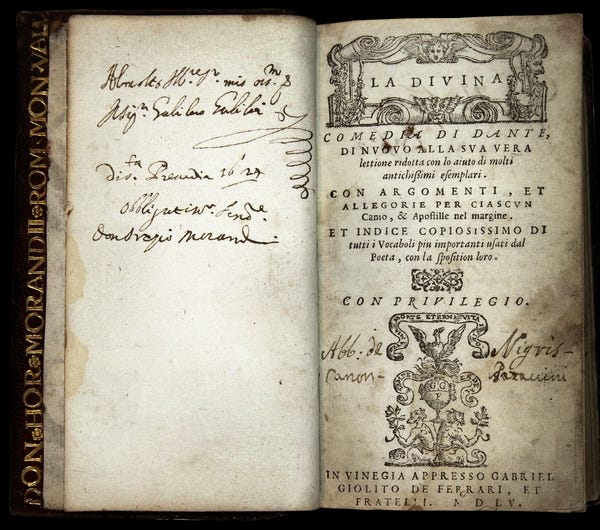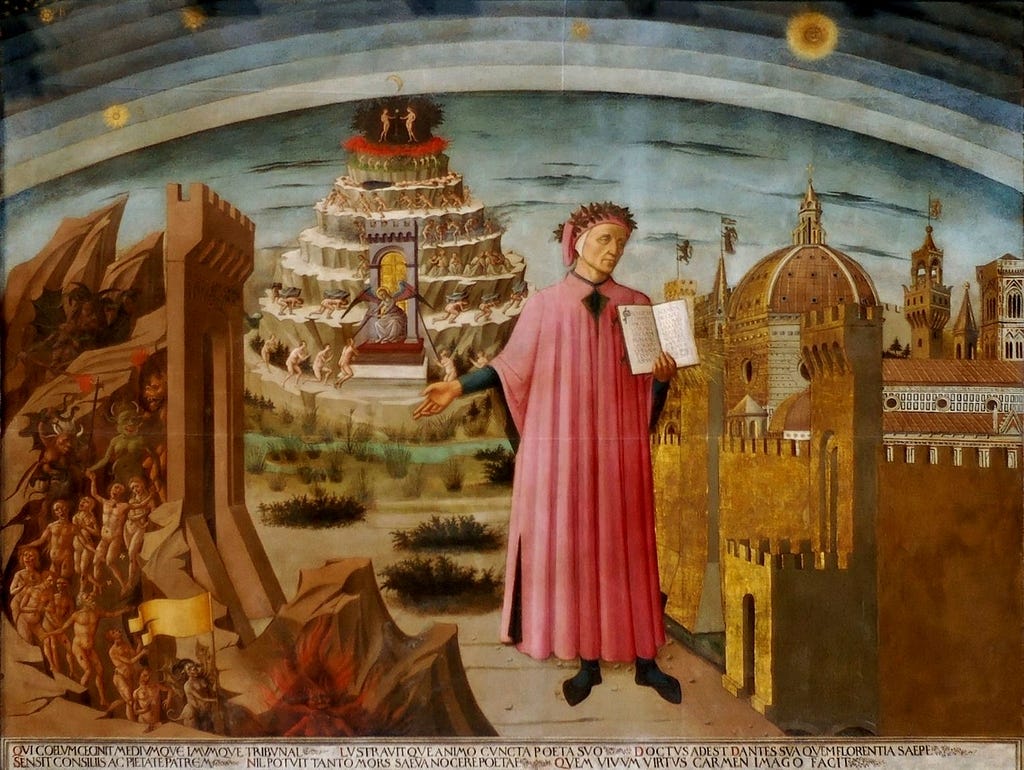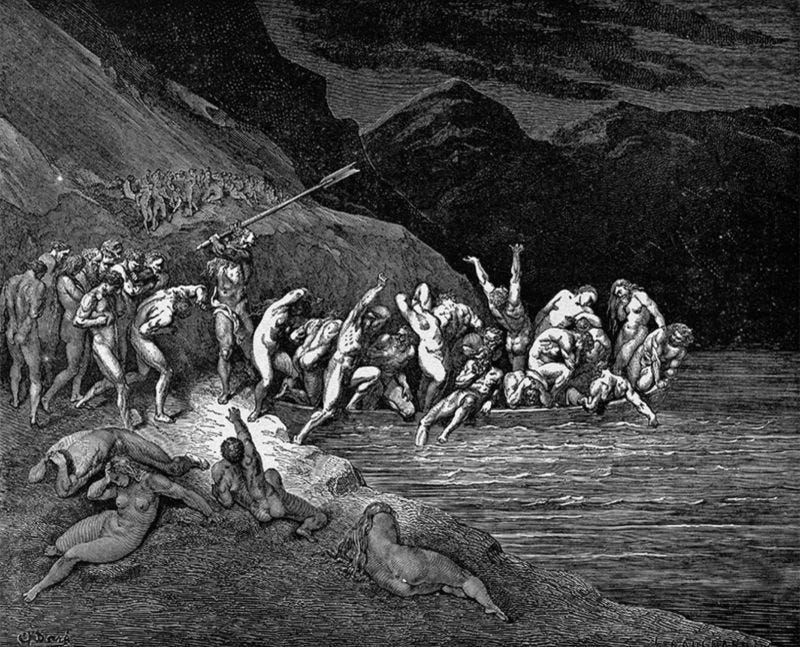Spiritfarer and the Divine Comedy
A poet’s descent into hell, a video game’s poetry of the beyond #literature #graphicart #painting #videogame
Welcome back to Artcade, where even a paywall can’t keep you from something interesting to read. Yes, we’ve reached that one monthly issue where part of the content is locked, but don’t worry: the entire section on the Divine Comedy is still open. And if you’d like to read the rest, there’s always the free trial. Just so you know: I’d be thrilled if you chose to support Artcade. Let’s say—given today’s theme—that it’s the best way to move me from hell up to paradise. Enjoy the read!
Domenico di Michelino e Alesso Baldovinetti (1465) Dante with the Divine Comedy [Painting] [Tempera on canvas] Cathedral of Santa Maria del Fiore, Florence
No matter how often we humans tell one another to go to hell—figuratively, at least—hell itself isn’t easy to reach. Souls have to cross the Acheron, and only the ferryman Charon can make that crossing.
Could Dante Alighieri, author of the Divine Comedy, ever pass up the chance to describe such a figure? Of course not.
Charon the demon, with the eyes of glede,
Beckoning to them, collects them all together,
Beats with his oar whoever lags behind.
Here’s the original Italian text:
Caron dimonio, con occhi di bragia,
loro accennando, tutte le raccoglie;
batte col remo qualunque s’adagia.
Dante Alighieri [1321] The Divine Comedy (1867 translation by Henry Wadsworth Longfellow) [La Divina Commedia] [Literature] [Allegorical poem] Standard Ebooks

As you can imagine, Italian students study the Divine Comedy in school. It’s one of those unavoidable classics, much like The Betrothed, which we discussed in the episode “A Plague Tale, Albert Camus, and The Betrothed.”
First published in 1321, the poem has appeared in every possible edition: from the inexpensive volumes we use in class to luxurious collector’s versions. One of the most famous features Gustave Doré’s gorgeous illustrations; in the mid 1800s he engraved the poem’s most striking scenes. How could I resist showing you Charon?
Gustave Doré (1861) [Graphic art] [Engraving] reproduction from (2013) Gustave Doré’s Divine Comedy by Dante Alighieri [La divina commedia di Dante Alighieri di Gustave Doré] [Digital Edition] Milano, Arnoldo Mondadori Editore
The trip hardly looks pleasant. Blame the monopoly, perhaps?
Keep reading with a 7-day free trial
Subscribe to Artcade to keep reading this post and get 7 days of free access to the full post archives.



